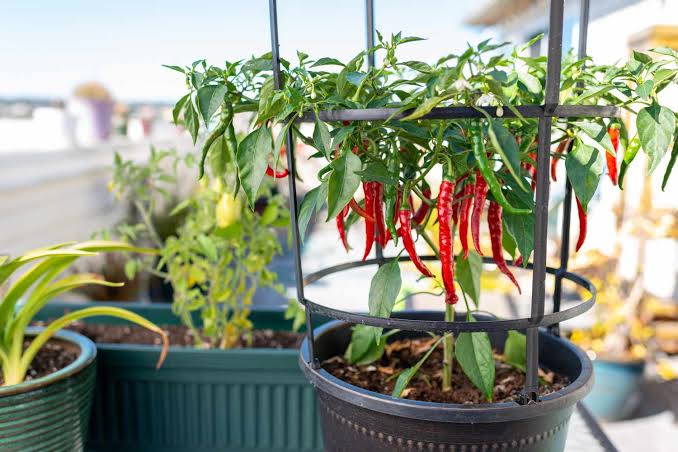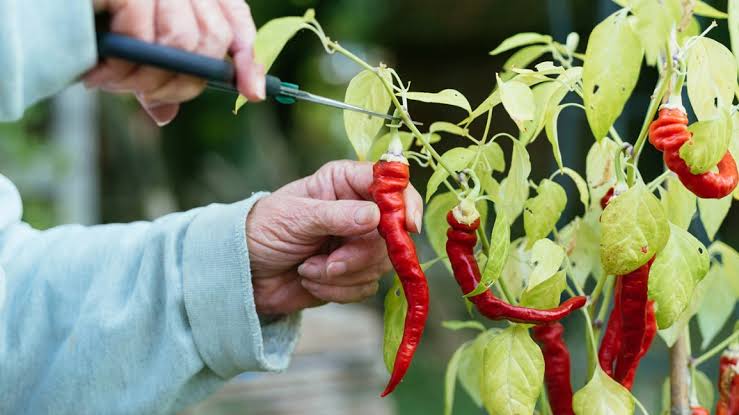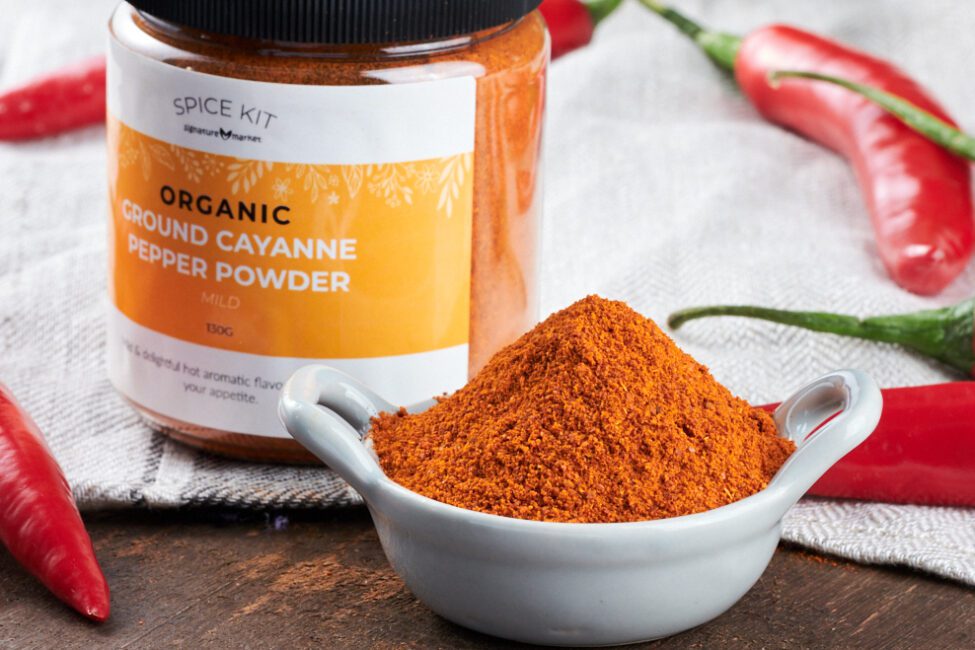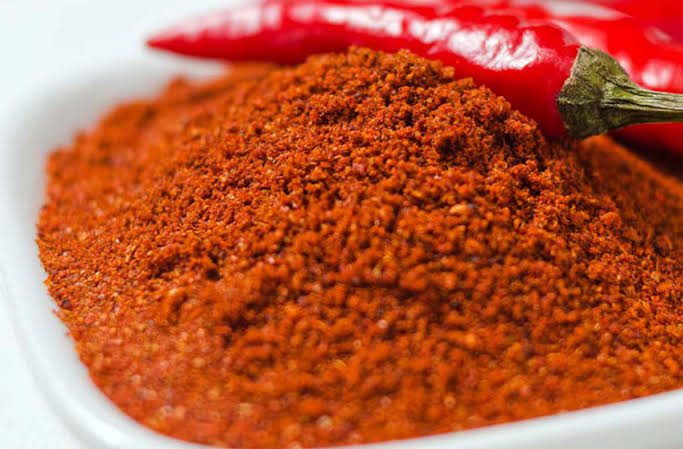Cayenne pepper is a spicy spice. It comes from a red pepper. People use it to make food taste better. It’s a popular spice in many countries.
Cayenne pepper is very hot. It makes your mouth feel like it’s on fire! But some people like that spicy taste. They use cayenne pepper in their cooking. It’s not just spicy, though. Cayenne pepper has health benefits too.
One benefit is that cayenne pepper can help your heart. It has a chemical called capsaicin. Capsaicin can help lower your blood pressure. That’s good for your heart.
Cayenne pepper can also help your digestion. It can make your stomach feel better. Some people take cayenne pepper as a medicine for their stomach.
Cayenne pepper is easy to use. You can sprinkle it on your food. Or you can add it to recipes. Just be careful not to use too much. A little goes a long way!
Therefore, cayenne pepper is a spicy spice with many benefits. It can make your food taste better, help your heart, and improve your digestion. Just remember, a little cayenne pepper can go a long way in your cooking.
Read Also: Cutworms: How to Identify and Get Rid of Cutworms
How to Grow the Cayenne Pepper

Growing Cayenne pepper is a rewarding and relatively straightforward process. Here’s a simple guide on how to grow Cayenne pepper:
1. Select the Right Location: Choose a sunny spot in your garden or a location with at least 6-8 hours of direct sunlight per day. Cayenne peppers love warmth and sunlight.
2. Prepare the Soil: Cayenne peppers prefer well-drained, fertile soil with a pH level between 6.0 and 6.8. You can amend your soil with compost or well-rotted manure to improve its quality.
3. Start from Seeds: You can start Cayenne peppers from seeds indoors 8-10 weeks before the last expected frost in your area. Use seed trays or pots filled with seed-starting mix.
4. Planting Seeds: Plant the Cayenne pepper seeds about 1/4 inch deep in the soil. Water them lightly.
5. Transplant Seedlings: Once the seedlings have developed at least two sets of true leaves, you can transplant them into your garden or larger pots if you’re growing them indoors.
6. Spacing: Space Cayenne pepper plants about 18-24 inches apart in rows that are 24-36 inches apart. This allows for good air circulation.
7. Watering: Water your Cayenne pepper plants consistently, keeping the soil evenly moist but not soggy. Water deeply, especially during dry periods.
8. Mulch: Applying mulch around your Cayenne pepper plants helps retain moisture, suppress weeds, and regulate soil temperature.
9. Fertilizing: Use a balanced fertilizer or one with higher phosphorus and potassium levels to encourage flowering and fruiting. Apply fertilizer sparingly, following the package instructions.
10. Support: As your Cayenne pepper plants grow, they may benefit from staking or cage support to keep them upright, especially when they become top-heavy with peppers.
11. Pruning: Pinch off the first few flower buds that appear to encourage the plant to put more energy into growth before it starts producing peppers.
12. Pest and Disease Management: Keep an eye out for common garden pests like aphids and caterpillars. Use organic pest control methods or insecticidal soap as needed. Cayenne peppers are generally resistant to many diseases.
13. Harvesting: Cayenne peppers typically mature in about 70-80 days. They change from green to red as they ripen. You can harvest them at any stage, but they’ll be spicier when fully red.
14. Enjoy Your Cayenne Peppers: Use your homegrown Cayenne peppers in a variety of dishes to add a spicy kick. You can also dry them or make Cayenne pepper sauce for long-term use.
By following these steps and providing the right care, you can successfully grow Cayenne peppers and enjoy their fiery flavor in your culinary creations.
12 Health Benefits of Cayenne Pepper

Cayenne pepper offers several potential health benefits when consumed in moderation. Here are 12 of them:
1. Pain Relief: Cayenne pepper contains capsaicin, a compound that can help reduce pain. It is often used topically in creams and patches to relieve conditions like arthritis and muscle pain.
2. Heart Health: Capsaicin may help lower blood pressure by relaxing blood vessels and improving circulation. It may also reduce cholesterol levels, promoting heart health.
3. Weight Management: Cayenne pepper can boost metabolism and increase calorie burning, which may aid in weight loss efforts.
4. Digestive Aid: Cayenne pepper stimulates the production of digestive enzymes and can help relieve indigestion and gas. It may also soothe an upset stomach.
5. Anti-Inflammatory: Capsaicin has anti-inflammatory properties that can help reduce inflammation and ease symptoms in conditions like osteoarthritis.
6. Pain Management: Topical applications of cayenne pepper can provide relief from conditions like neuropathic pain and cluster headaches.
7. Antioxidant Properties: Cayenne pepper is rich in antioxidants, which can help protect cells from damage caused by free radicals.
8. Improved Circulation: Capsaicin can promote better blood flow, which may be beneficial for those with circulatory issues.
9. Nasal Congestion Relief: Consuming cayenne pepper can help clear nasal passages and relieve congestion due to its spicy nature.
10. Weight Loss Support: Cayenne pepper may help reduce appetite and increase feelings of fullness, potentially aiding in weight management.
11. Cancer Prevention: Some studies suggest that capsaicin may have anticancer properties and could inhibit the growth of certain cancer cells.
12. Antibacterial Properties: Cayenne pepper contains compounds that may help fight against harmful bacteria and reduce the risk of infection.
While Cayenne pepper has these potential benefits, it’s important to use it in moderation, as excessive consumption can lead to stomach irritation or worsen certain health conditions. Always consult with a healthcare professional before using Cayenne pepper as a treatment for specific medical issues.
Read Also: Causes of Diseases in Farm Animals and How to Prevent Disease OutBreak
15 Uses of Cayenne Pepper Spices

Cayenne pepper has a wide range of uses, both in cooking and for various other purposes. Here are some common uses of cayenne pepper:
1. Culinary Spice: Cayenne pepper is primarily used as a spice to add heat and flavor to dishes. It’s a key ingredient in many cuisines, including Mexican, Indian, and Cajun.
2. Seasoning: Sprinkle cayenne pepper on foods like soups, stews, chili, pasta, and pizza to give them a spicy kick.
3. Spice Blends: It’s often included in spice blends like curry powder, chili powder, and Cajun seasoning.
4. Hot Sauce: Cayenne pepper is a key ingredient in many hot sauces, including Tabasco sauce.
5. Marinades: Add cayenne pepper to marinades for meat, poultry, or seafood to infuse them with flavor and heat.
6. Pickling: It can be used to add spiciness to pickled vegetables like jalapeños and banana peppers.
7. Baking: Some dessert recipes, especially chocolate-based ones, include a small amount of cayenne pepper to add depth and complexity to the flavor.
8. Home Remedies: Cayenne pepper is used in some natural remedies, such as gargles to soothe a sore throat or in concoctions to alleviate congestion.
9. Pain Relief: Capsaicin creams and patches, derived from cayenne pepper, are used topically to relieve pain from conditions like arthritis and muscle aches.
10. Weight Loss: Some people incorporate cayenne pepper into weight loss regimens due to its potential metabolism-boosting effects.
11. Anti-Clogging Agent: Cayenne pepper can be used to unclog drains when combined with other household items like vinegar and baking soda.
12. Gardening: Cayenne pepper powder is sometimes sprinkled around garden plants to deter pests like squirrels and rabbits.
13. Homemade Repellents: It can be used as an ingredient in homemade animal repellents to keep pests out of gardens.
14. Emergency First Aid: In some cases, cayenne pepper can be used as an emergency remedy to help stop bleeding. However, this should only be done with caution and under professional guidance.
15. Preservation: Cayenne pepper can be added to homemade pickling solutions to help preserve fruits and vegetables.
Keep in mind that cayenne pepper is quite spicy, so its usage should be adjusted to your personal tolerance for heat. It’s always a good idea to start with a small amount and adjust accordingly in recipes.
Cayenne Pepper Powder

Cayenne pepper powder is a spicy spice that comes from red peppers. People make it by grinding these peppers into a fine powder. It’s a spice that adds a hot and spicy flavor to foods.
Here are some simple facts about the cayenne pepper powder:
1. Spice with Heat: Cayenne pepper powder is known for its spiciness. It can make your mouth feel hot! Some people like this spicy taste in their food.
2. Cooking Helper: People use cayenne pepper powder in cooking. It can make dishes like chili, curry, and sauces taste more exciting. Just a little bit can make a big difference.
3. Good for Health: Cayenne pepper powder has a chemical called capsaicin. This chemical can be good for your health. It might help your heart and metabolism.
4. Easy to Use: Using cayenne pepper powder is easy. You can sprinkle it on your food while you cook. Be careful not to use too much because it can be very spicy!
5. Spice Variety: Cayenne pepper powder is one of many spices you can have in your kitchen. It adds a unique flavor to your meals.
In conclusion, cayenne pepper powder is a spicy spice made from red peppers. People use it in cooking to add flavor and heat to their dishes. It’s easy to use, but you should use it in moderation because it’s very spicy. If you like spicy foods, cayenne pepper powder can be your kitchen friend.
Read Also: Old Mattress (Mattress Wastes) Money Making Complete Guide
